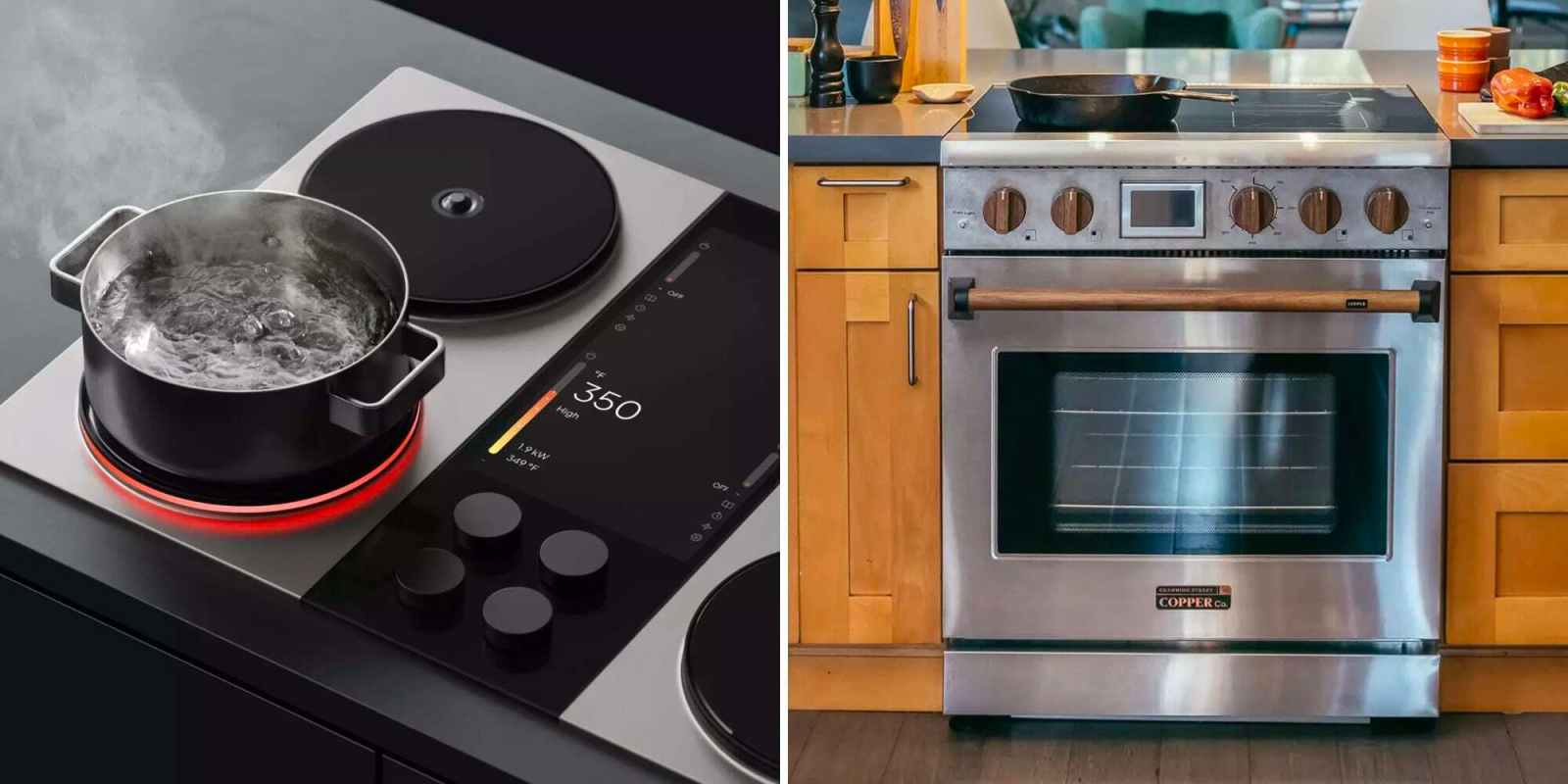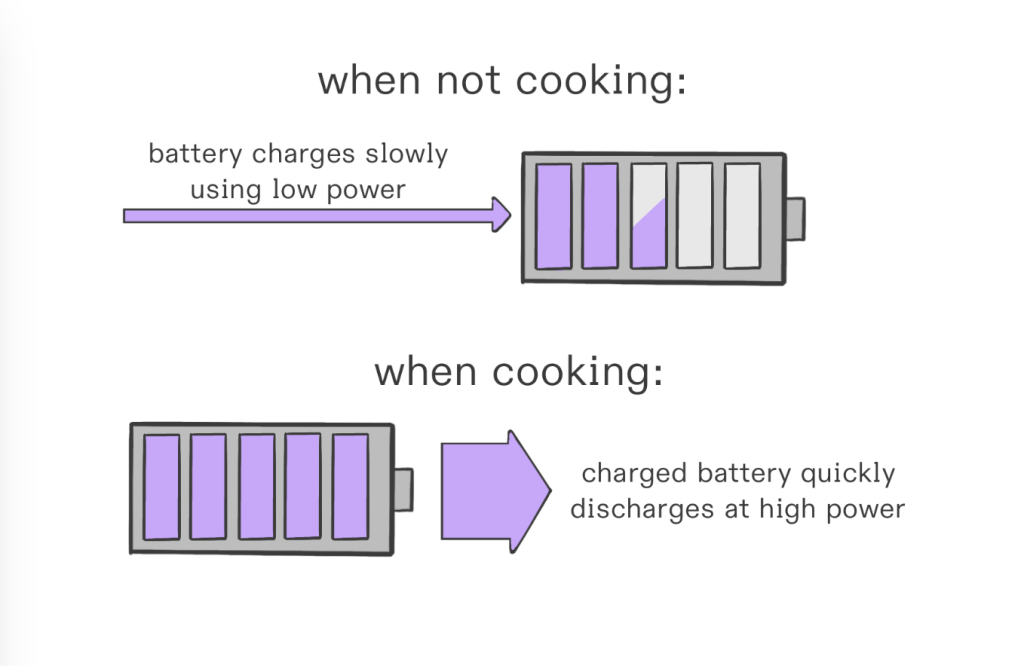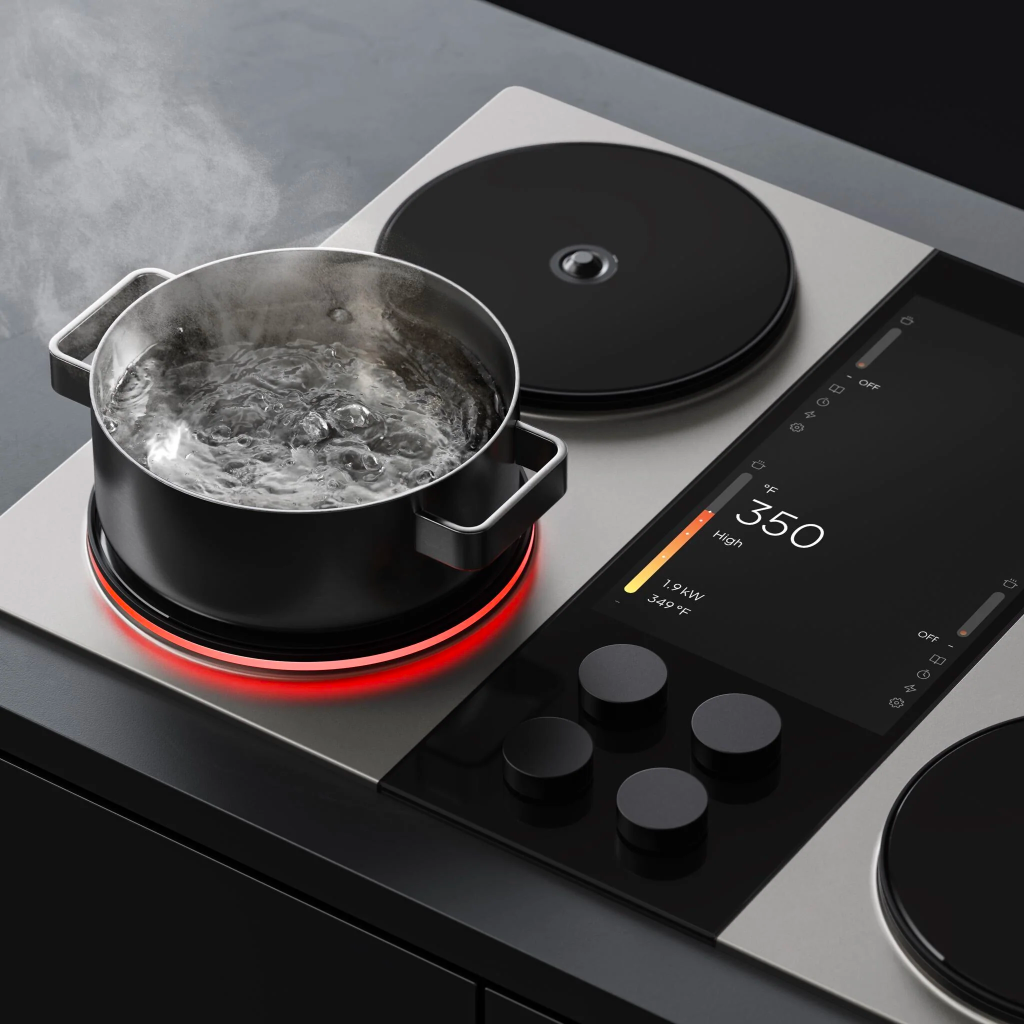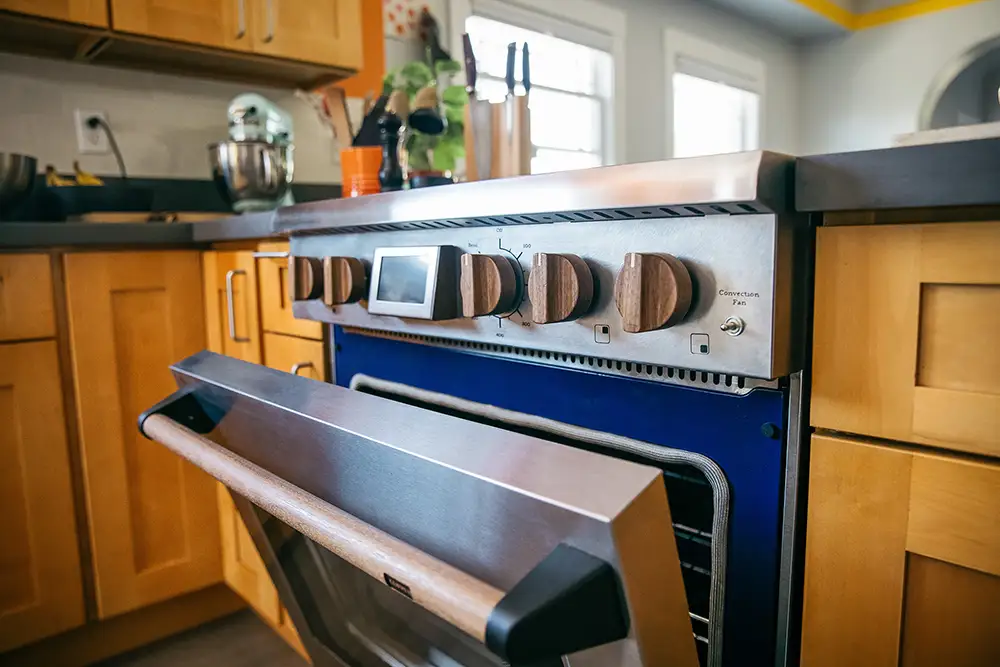
Induction stoves are a great, safe way to save on electricity costs and can heat much quicker, safer, and more accurately than natural gas or propane stoves. But a new breed of these stoves includes huge batteries, which opens up new opportunities by only requiring a 120V outlet, offering 40-sec water boiling, backup power to other appliances like the refrigerator, and even IRA tax rebates. Let’s take a look at two of these new models and try to understand if it makes sense for an oven to have a huge battery over a more centralized Powerwall type of home backup battery.
This is part of a continuing series at Electrek that focuses on home energy usage, see our coverage of heat pump washer/dryers
Why induction stoves make a lot of sense
Induction stoves send electromagnetic waves to pots and pans that are magnetic, heating up only a limited area where food and liquid go. Because of this, they are more efficient than typical electric resistance stoves and also safer because the surface of the oven doesn’t get very hot.
As for natural gas and propane, every study that comes out shows that there are significant health hazards with burning gas inside, as well as multiple opportunities for leaks, which are even more unhealthy. Not to mention, they add more carbon to the atmosphere.
One of the last reasons for a gas stove is speed and accuracy in cooking. Those have both been supplanted by induction, which can boil a liter of water in 40 seconds and heat much more accurately. Even Woks now have induction capabilities.
Because Induction stoves are energy efficient, some of the cost can be offset by an IRA rebate of up to $840, and that’s before you add a battery to the mix.

Why add a battery to an Induction oven?
There are a ton of Induction oven options out there, but a new breed includes a significant battery inside the actual stove/top. By adding a battery, you can heat four burners with a normal household 120V line.
This is important for those replacing gas or propane stoves and don’t want to add the cost of running a 240V line that most resistance and induction ovens require.
But there are some other uses. First of all, it means your stove can work in a blackout. Or it can run entirely off the battery during peak and super peak cost times, saving money and requiring fewer peaker plants to operate at scale.
Even better, it can back up important appliances in your kitchen (fridge) and elsewhere in the home. For people in small homes, it could function as a whole house backup in some cases.
That’s important because it doesn’t require an electrician to install. You can get much of the utility of a home Powerwall battery in a small package that installs as easily as an oven.
The Battery Induction Options

Impulse Labs’ $5500 Cooktop is the most prominent product out there and includes a cooktop but not an oven with a 3kWh battery. Because of that big LFP battery, the cooktop only requires a 120V outlet (but also works on 240V).
That 3kWh battery, coupled with the 1.5kW AC, can output 10kW of power, which the company claims will boil a liter of water in as little as 40 seconds.
That’s many times quicker than resistance ovens and gas stoves. If you opt for a 240V connector, the device can act like a grid-tied inverter, sending up to 2.2kW of power back into the house when the power goes out. That means over an hour of home backup power is living in your cooktop (?!)

Impulse Cooktop Highlights
- Expected shipment in Q4 2024.
- Proprietary temperature sensing and first party induction technology in each 9” burner.
- Peak performance of 10 kW – about 3 times current induction and 5 times high-end gas stoves.
- Each heating element contains an LED ring for clear communication of the burner state.
- Sleek, user friendly design and 12.8” LCD interface.
- Four removable, magnetic knobs for ease of control and cleaning.
- Integrated 3 kWh LFP battery provides unparalleled performance, back-up power to run the stove during outages, and load shifting for bill savings and clean energy use.
Price & Rebates
- A $249 deposit today secures your Impulse Cooktop at the limited, discounted price of $5,499*, the remaining balance of $5,250* will be charged automatically prior to confirmed ship date.
- The Impulse Cooktop is eligible for the 30% Residential Clean Energy Credit, reducing the total price to approximately $3,850* after refund. Customers are responsible for applying for credits. Eligibility for additional federal and state subsidies depends on household income and location, learn more in our FAQs.
Specs
- Dimensions: 30” cooktop.
- Performance: up to 10 kW with exact temperature control starting at room temperature.
- Pan compatibility: works with induction-compatible pans.
- Power requirements: 120V / 15A (NEMA 5-15P plug) or 240V circuit.
- Battery: 3 kWh Lithium Iron Phosphate.
- Inverter: grid-tied, up to 2.2 kW, 220-250V 50-60 Hz AC.
- Depth: fits in standard drop-in countertops (compatible with typical drawer clearance).
Whole Induction Oven
Channing Street Copper in Berkeley, CA takes a different approach with their $6000 “Charlie” oven. Instead of a sleek, modern stovetop, they include a whole classic looking oven and bigger 4kWh LFP battery. Yes, those are walnut wood knobs.

That 4kWh battery is big enough to not only get IRA money as an efficient oven upgrade, but also as a whole house backup battery. About a third the size of a Tesla Powerwall, it can backup a refrigerator for days or a small apartment for hours.
The burners aren’t quite as fast as the Impulse, notching a still respectable 3.2kW/ea
Channing Street Copper lays out the gameplan – the important bit however is that this is currently limited to San Francisco Bay area residents and is currently fully subscribed.
With the federal 30% battery tax credit, the final cost will be approximately $4,200.
Federal induction range incentive of $840 rebate will apply to anyone switching from a gas range and earning less than 150% of Area Median Income.
Bay Area local incentive or $750 rebate will apply to to anyone in the San Francisco Bay Area switching from a gas range.
Additional local incentives may apply, and we will help ensure you get every applicable rebate or tax credit available.
For comparison, buying a conventional induction range and rewiring your Bay Area kitchen will exceed $5,000 in most cases.

The LFP battery is stored at the bottom below the heated areas and there is an outlet built in for backup devices.
Here’s a great podcast with the founders if you want to get really geeky on the matter.
Electrek’s take
Top comment by BrianForCivilDiscourse
The oven back feeds power to the house during a power outage? If so, a lineman working on what should be a de-energized power line will not be happy that this oven is also back feeding power into his hands. The only way to avoid that is by installing a contactor dis-connect at the home's electrical panel. So much for not needing an electrician when installing this oven.
We’re early days but for many of the same reasons that 120V heat pump washer/dryers make a lot of sense, so do induction ovens with onboard batteries. It is incredibly expensive to run a new 240V line from the breaker box to the kitchen, often as much as the cost of the appliance.
People are taxing their home breaker boxes by adding electric vehicle chargers and replacing fossil fuel heating with heat pumps. These ovens let you take that 240V circuit elsewhere and not into the kitchen oven.
As far as a home battery, it is probably more cost effective and efficient to centralize the home battery in something like a Tesla Powerwall rather than have batteries living in appliances like ovens. But not everyone can put a whole home battery into their home, and even if they can, it isn’t cheap. As a secondary backup or for a small apartment, getting a significant sized battery backup as a perk from your oven seems like a pretty good bonus.
And, if nothing else, this should be the nail in the coffin for gas ovens which are more dangerous, slower and worse fo r the environment.
FTC: We use income earning auto affiliate links. More.


Comments